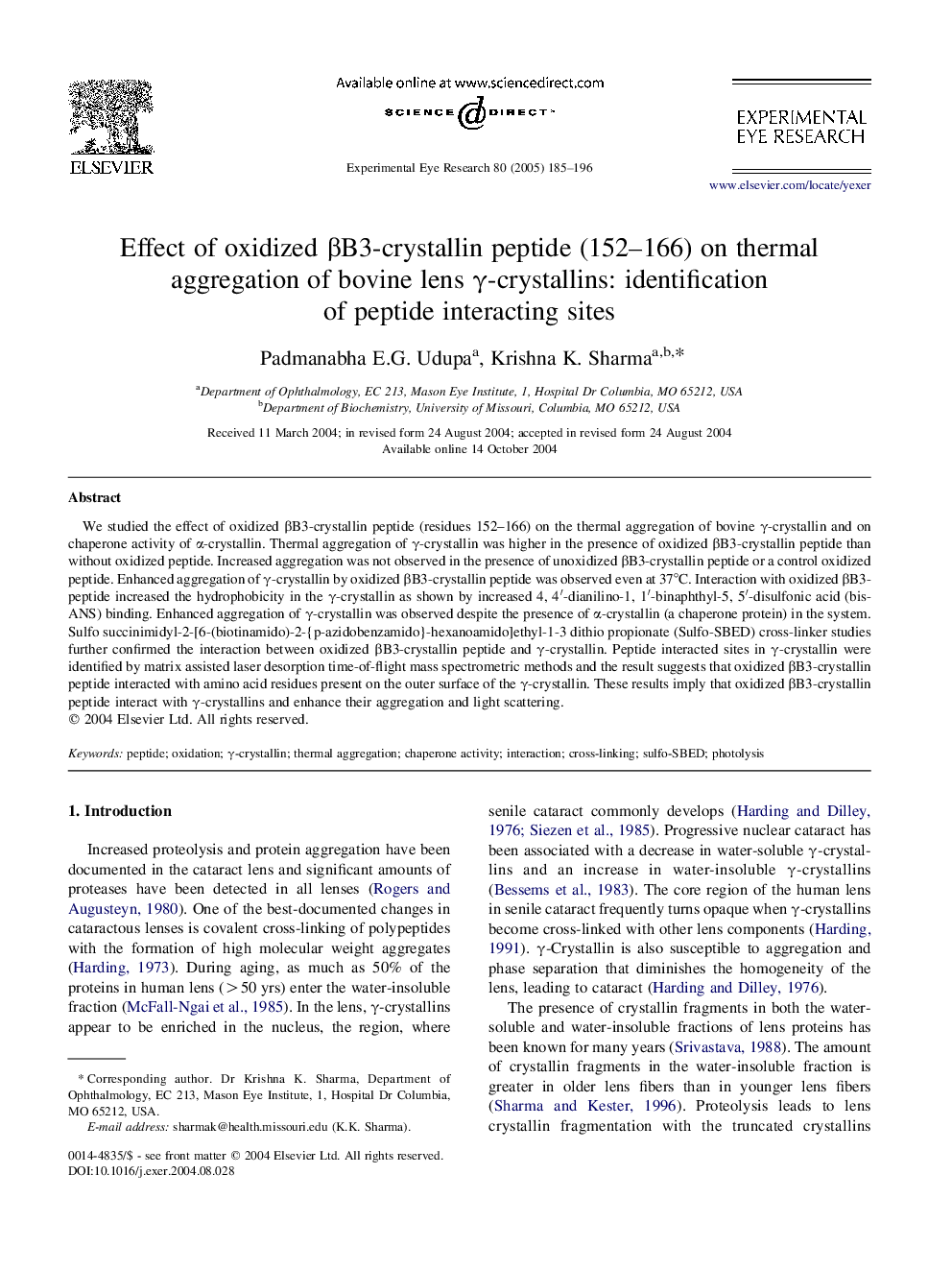| Article ID | Journal | Published Year | Pages | File Type |
|---|---|---|---|---|
| 9342051 | Experimental Eye Research | 2005 | 12 Pages |
Abstract
We studied the effect of oxidized βB3-crystallin peptide (residues 152-166) on the thermal aggregation of bovine γ-crystallin and on chaperone activity of α-crystallin. Thermal aggregation of γ-crystallin was higher in the presence of oxidized βB3-crystallin peptide than without oxidized peptide. Increased aggregation was not observed in the presence of unoxidized βB3-crystallin peptide or a control oxidized peptide. Enhanced aggregation of γ-crystallin by oxidized βB3-crystallin peptide was observed even at 37°C. Interaction with oxidized βB3-peptide increased the hydrophobicity in the γ-crystallin as shown by increased 4, 4â²-dianilino-1, 1â²-binaphthyl-5, 5â²-disulfonic acid (bis-ANS) binding. Enhanced aggregation of γ-crystallin was observed despite the presence of α-crystallin (a chaperone protein) in the system. Sulfo succinimidyl-2-[6-(biotinamido)-2-{p-azidobenzamido}-hexanoamido]ethyl-1-3 dithio propionate (Sulfo-SBED) cross-linker studies further confirmed the interaction between oxidized βB3-crystallin peptide and γ-crystallin. Peptide interacted sites in γ-crystallin were identified by matrix assisted laser desorption time-of-flight mass spectrometric methods and the result suggests that oxidized βB3-crystallin peptide interacted with amino acid residues present on the outer surface of the γ-crystallin. These results imply that oxidized βB3-crystallin peptide interact with γ-crystallins and enhance their aggregation and light scattering.
Keywords
Related Topics
Life Sciences
Immunology and Microbiology
Immunology and Microbiology (General)
Authors
Padmanabha E.G. Udupa, Krishna K. Sharma,
